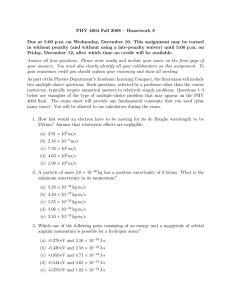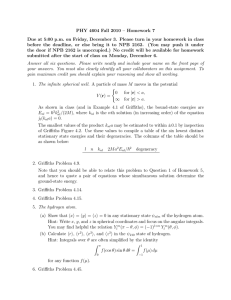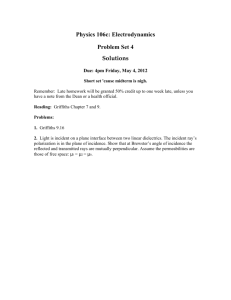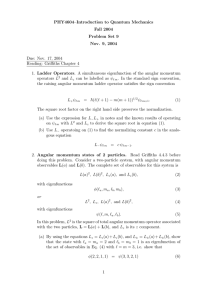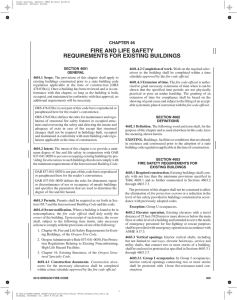PHY 4604 Spring 2012 – Homework 8
advertisement
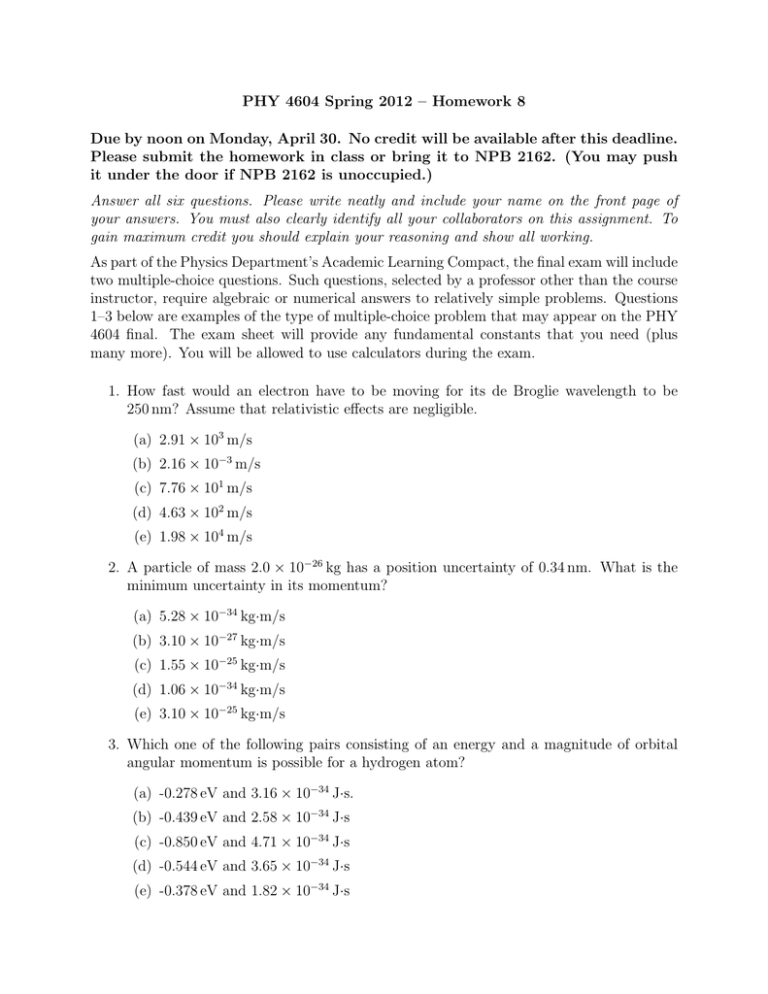
PHY 4604 Spring 2012 – Homework 8 Due by noon on Monday, April 30. No credit will be available after this deadline. Please submit the homework in class or bring it to NPB 2162. (You may push it under the door if NPB 2162 is unoccupied.) Answer all six questions. Please write neatly and include your name on the front page of your answers. You must also clearly identify all your collaborators on this assignment. To gain maximum credit you should explain your reasoning and show all working. As part of the Physics Department’s Academic Learning Compact, the final exam will include two multiple-choice questions. Such questions, selected by a professor other than the course instructor, require algebraic or numerical answers to relatively simple problems. Questions 1–3 below are examples of the type of multiple-choice problem that may appear on the PHY 4604 final. The exam sheet will provide any fundamental constants that you need (plus many more). You will be allowed to use calculators during the exam. 1. How fast would an electron have to be moving for its de Broglie wavelength to be 250 nm? Assume that relativistic effects are negligible. (a) 2.91 × 103 m/s (b) 2.16 × 10−3 m/s (c) 7.76 × 101 m/s (d) 4.63 × 102 m/s (e) 1.98 × 104 m/s 2. A particle of mass 2.0 × 10−26 kg has a position uncertainty of 0.34 nm. What is the minimum uncertainty in its momentum? (a) 5.28 × 10−34 kg·m/s (b) 3.10 × 10−27 kg·m/s (c) 1.55 × 10−25 kg·m/s (d) 1.06 × 10−34 kg·m/s (e) 3.10 × 10−25 kg·m/s 3. Which one of the following pairs consisting of an energy and a magnitude of orbital angular momentum is possible for a hydrogen atom? (a) -0.278 eV and 3.16 × 10−34 J·s. (b) -0.439 eV and 2.58 × 10−34 J·s (c) -0.850 eV and 4.71 × 10−34 J·s (d) -0.544 eV and 3.65 × 10−34 J·s (e) -0.378 eV and 1.82 × 10−34 J·s 4. Griffiths Problem 4.19. Replace part (b) with the following: (b) Use these results and the definition of Lx in Equation (4.96) to obtain [Lz , Lx ] = i~Ly . 5. Griffiths Problem 4.27. 6. Griffiths Problem 4.36.
